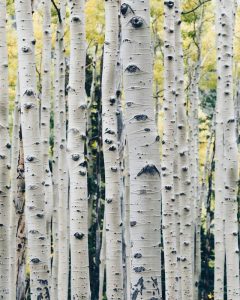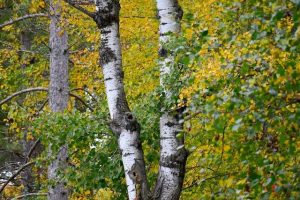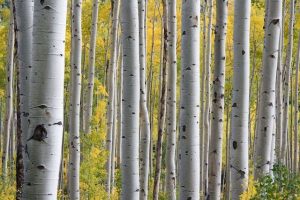Birch trees are known for their beauty and unique bark, making them a popular choice for landscaping and ornamental purposes.
However, not all types of trees can grow in every climate or region. This raises the question: can birch trees grow in Arkansas?
Key Takeaways
- Birch trees are known for their unique bark and are native to the northern hemisphere.
- Arkansas is home to a diverse range of native trees, including oak, hickory, and pine trees.
- While birch trees are not native to Arkansas, certain species can be grown successfully in the state’s climate with proper care and maintenance.
Understanding Birch Trees
Birch trees, belonging to the genus Betula, are deciduous trees that are known for their distinctive bark and delicate foliage.
There are over 60 species of birch trees, with varying sizes and colors of bark, but all share similar characteristics.
Birch trees are typically medium to large in size, ranging from 30 to 100 feet tall at maturity.
The size of the birch tree depends on the species and cultivar. For example, the paper birch (Betula papyrifera) can grow up to 70 feet tall, while the river birch (Betula nigra) can grow up to 90 feet tall.
The bark of birch trees is one of their most distinctive features. The bark is typically white, gray, or silver, with black markings or lenticels.
Some species, such as the yellow birch (Betula alleghaniensis), have bark that is yellowish-brown in color. The bark of birch trees is also known for its peeling or exfoliating texture, which adds to its visual appeal.
Birch trees are adaptable to a wide range of soil types, but they prefer well-drained soils that are slightly acidic.

They also require full sun to thrive, but can tolerate some shade. Birch trees are commonly used in landscaping due to their attractive bark and foliage, and are often planted in groups or as a specimen tree.
Overall, birch trees can be a great addition to any landscape, adding a unique visual element with their distinctive bark and delicate foliage. With proper care and maintenance, birch trees can thrive in Arkansas and other regions with similar climates.
Native Trees in Arkansas
Arkansas is home to a diverse range of native trees that thrive in the state’s climate and soil conditions. Some of the most common native trees in Arkansas include oak, pine, loblolly pine, magnolia, sugar maple, dogwood, and persimmon.
The state’s eastern region is dominated by oak and pine forests, while the southern part of Arkansas is home to magnolias and other broadleaf trees. The Ozark region in the north is characterized by a mix of hardwoods, including oak, hickory, and thorn trees.
One of the most common native trees in Arkansas is the water oak (Quercus nigra), which grows in most counties across the state. Other popular native trees include the American holly (Ilex opaca), the sassafras (Sassafras albidum), and the sweetgum (Liquidambar styraciflua).
Homeowners looking for fast-growing trees may want to consider the black cherry (Prunus serotina) or the black walnut (Juglans nigra), both of which can grow up to 3 feet per year in the right conditions. The eastern redbud (Cercis canadensis) is another popular ornamental tree that produces beautiful pink flowers in the spring.
The Arkansas Forestry Commission recommends several native trees for homeowners, including the shortleaf pine (Pinus echinata), the yellow pine (Pinus palustris), and the cherrybark oak (Quercus pagoda).
When planting native trees in Arkansas, it is important to consider the tree’s soil and moisture requirements, as well as its tolerance for heat and cold. Proper pruning and maintenance can also help ensure the long-term health of native trees in the state.
Specifics of Birch Trees in Arkansas
Birch trees are not native to Arkansas, but some species of birch can be grown successfully in the state. The river birch (Betula nigra) is the only birch species that is native to Arkansas.
River birch trees are commonly found growing in forests and along rivers and streams throughout the state. They are known for their attractive peeling bark that ranges in color from creamy white to reddish-brown. River birch trees can grow up to 70 feet tall and are relatively fast-growing, reaching maturity in about 20 years.

In addition to their aesthetic value, river birch trees provide important ecological benefits. They are an important source of food and habitat for wildlife, and their roots help prevent soil erosion along riverbanks.
While other species of birch can be grown in Arkansas, they may not be as well-suited to the state’s climate and soil conditions as the river birch. In general, birch trees prefer cool, moist climates and well-drained soil. They are not well-suited to hot, dry conditions or heavy clay soils.
If you are interested in growing birch trees in your yard or on your property, it is important to choose a species that is well-suited to your local climate and soil conditions. You may also want to consult with a local forestry expert or arborist to ensure that you are selecting the right species and planting them in the proper location.
In summary, while birch trees are not native to Arkansas, the river birch is well-suited to the state’s climate and soil conditions. It is an attractive and ecologically important tree that can be found growing in forests and along rivers and streams throughout the state. If you are interested in growing birch trees in Arkansas, it is important to choose a species that is well-suited to your local conditions and to consult with a local forestry expert or arborist.
Caring for Birch Trees in Arkansas
Birch trees can grow in Arkansas, but they require specific care to thrive in the state’s hot and humid climate. Homeowners who want to plant birch trees in their yards should be aware of the following tips to ensure their trees stay healthy and beautiful.
Soil and Water
Birch trees thrive in cool, moist soils, which can be a challenge in Arkansas. The state’s hot and dry summers can cause birch trees to become stressed, making them more vulnerable to pests and diseases. For this reason, it’s important to plant birch trees in areas of the yard that receive partial shade during the hottest parts of the day.

To keep the soil around the tree cool and moist, homeowners should add a layer of mulch to the base of the tree. This will help retain moisture and regulate soil temperature. Additionally, birch trees require regular watering, especially during periods of drought or extreme heat. Homeowners should water their trees deeply and infrequently, rather than shallowly and frequently.
Pruning
Pruning is an essential part of caring for birch trees in Arkansas. Regular pruning can help keep the tree’s shape and size under control, as well as remove dead or diseased branches. Homeowners should prune their birch trees in the late fall or winter, when the tree is dormant. Pruning during the growing season can cause the tree to become stressed and make it more vulnerable to pests and diseases.
When pruning birch trees, it’s important to use sharp, clean pruning tools to avoid damaging the tree. Homeowners should also avoid removing more than 25% of the tree’s canopy in a single year, as this can cause the tree to become stressed and make it more vulnerable to pests and diseases.
Conclusion
Birch trees can grow in Arkansas, but they require specific care to thrive in the state’s hot and humid climate. Homeowners should plant their trees in areas of the yard that receive partial shade, add a layer of mulch to the base of the tree to retain moisture, and water their trees deeply and infrequently. Additionally, regular pruning can help keep the tree’s shape and size under control, as well as remove dead or diseased branches.
